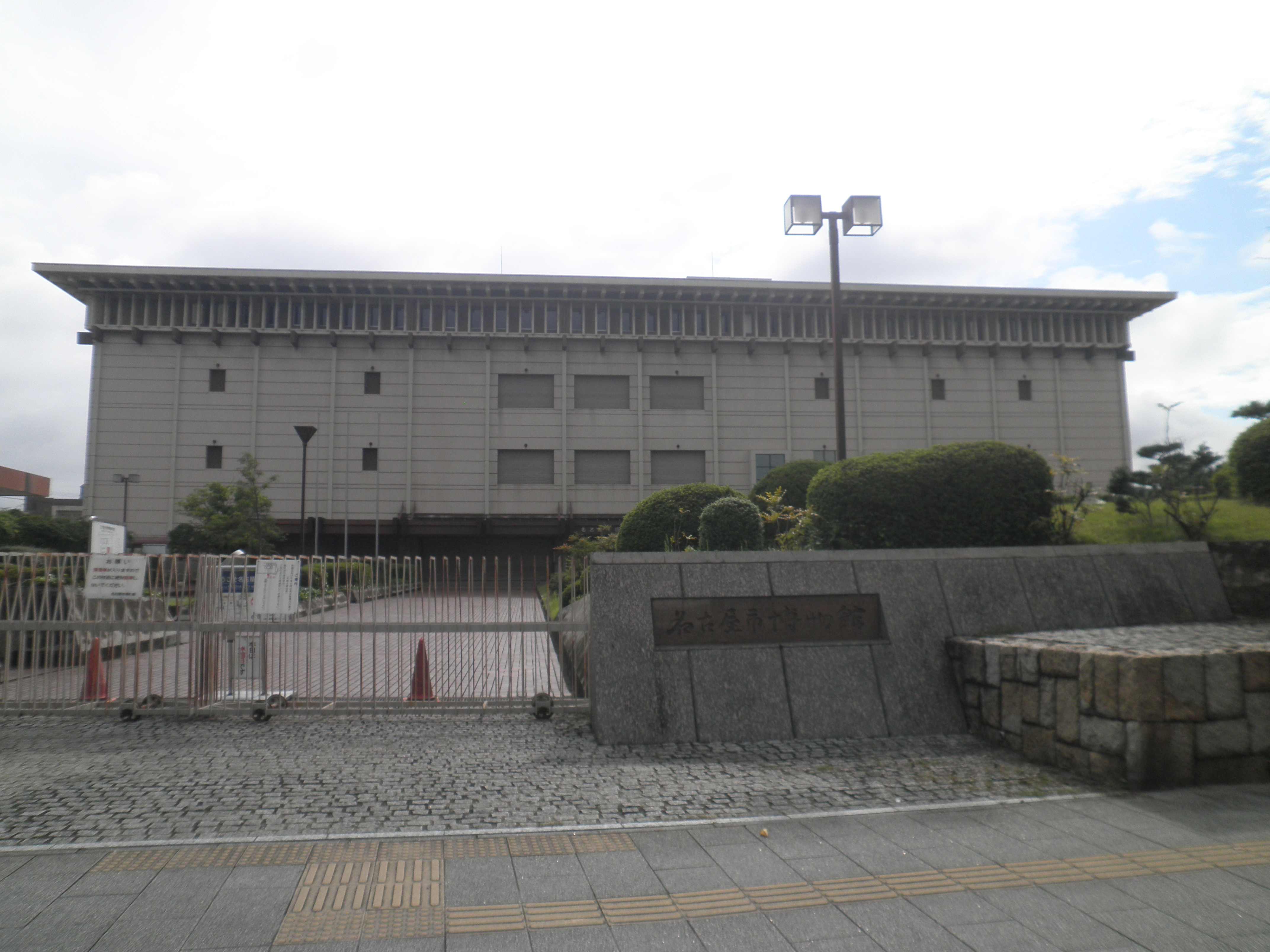Nagoya City Museum (2) on:
[Wikipedia]
[Google]
[Amazon]

 The is a museum of the city of
The is a museum of the city of Commons Wiki. Nagoya City Museum
/ref> The nearest stop by subway is
Homepage of the Nagoya City Museum
Museums in Nagoya History museums in Japan Museums established in 1977 1977 establishments in Japan {{Japan-museum-stub

 The is a museum of the city of
The is a museum of the city of Nagoya
is the largest city in the Chūbu region, the fourth-most populous city and third most populous urban area in Japan, with a population of 2.3million in 2020. Located on the Pacific coast in central Honshu, it is the capital and the most pop ...
in Aichi Prefecture
is a prefecture of Japan located in the Chūbu region of Honshū. Aichi Prefecture has a population of 7,552,873 () and a geographic area of with a population density of . Aichi Prefecture borders Mie Prefecture to the west, Gifu Prefectur ...
, Japan
Japan ( ja, 日本, or , and formally , ''Nihonkoku'') is an island country in East Asia. It is situated in the northwest Pacific Ocean, and is bordered on the west by the Sea of Japan, while extending from the Sea of Okhotsk in the north ...
.
The Nagoya City Museum was established in 1977. Its collection includes archaeological materials, fine art, crafts, documents, books and folk materials including samurai armor and weaponry, many of which are put on exhibition. It also owns a collection of rare Kawana ware
refers to a type of Japanese porcelain produced in and around the area of Kawana (川名), today Kawanayama-chō (川名山町) in Shōwa-ku, Nagoya, central Japan. It is of the ''sometsuke'' (染付) blue and white pottery type, but notable ...
.
In addition to the permanent exhibition of the history of the Owari Domain
The was a feudal domain of Japan in the Edo period. Located in what is now the western part of Aichi Prefecture, it encompassed parts of Owari, Mino, and Shinano provinces. Its headquarters were at Nagoya Castle. At its peak, it was rated at ...
starting from the Paleolithic period
The Paleolithic or Palaeolithic (), also called the Old Stone Age (from Greek: παλαιός ''palaios'', "old" and λίθος ''lithos'', "stone"), is a period in human prehistory that is distinguished by the original development of stone tool ...
, special exhibitions and thematic exhibitions take place around every five to seven years, such as the one on Gandhara
Gandhāra is the name of an ancient region located in the northwestern region of the Indian subcontinent, more precisely in present-day north-west Pakistan and parts of south-east Afghanistan. The region centered around the Peshawar Vall ...
in 2003.
A memorandum of understanding and cooperation was signed in January 2000 with the Vienna Museum
The Vienna Museum (german: Wien Museum or ''Museen der Stadt Wien'') is a group of museums in Vienna consisting of the museums of the history of the city. In addition to the main building in Karlsplatz and the Hermesvilla, the group includes nume ...
, establishing it as a partner museum./ref> The nearest stop by subway is
Sakurayama Station
is an underground metro station located in Mizuho-ku, Nagoya, Aichi Prefecture, Japan operated by the Nagoya Municipal Subway’s Sakura-dōri Line. It is located 9.5 kilometers from the terminus of the Sakura-dōri Line at Nakamura Kuyakusho ...
on the Sakura-dōri Line
The is a subway line, part of the Nagoya Municipal Subway system in Nagoya, Japan. It runs from Taiko-dori Station in Nakamura Ward to in Midori Ward, all within Nagoya. The Sakura-dōri Line's color on maps is red. In 2004, the city start ...
.
References
External links
Homepage of the Nagoya City Museum
Museums in Nagoya History museums in Japan Museums established in 1977 1977 establishments in Japan {{Japan-museum-stub